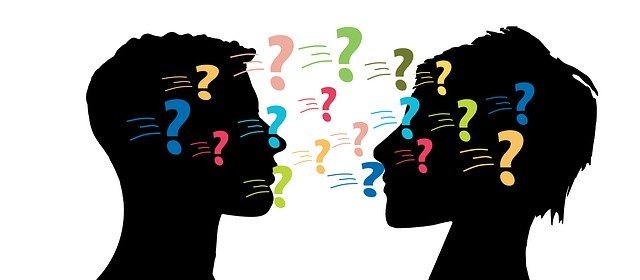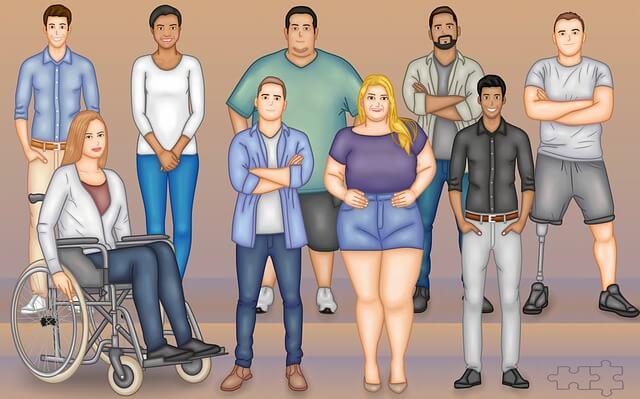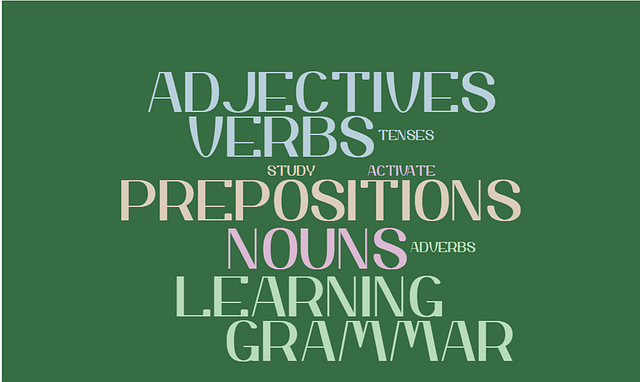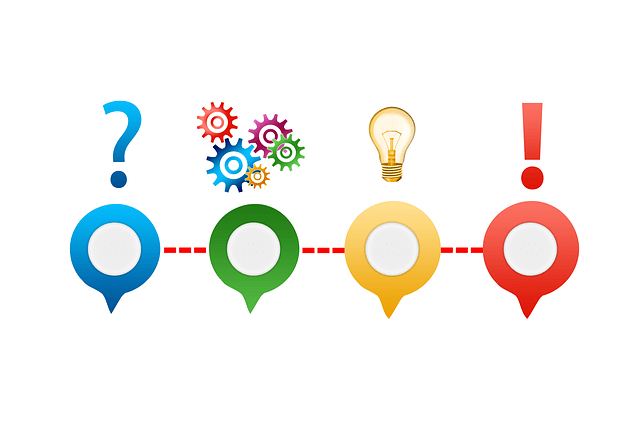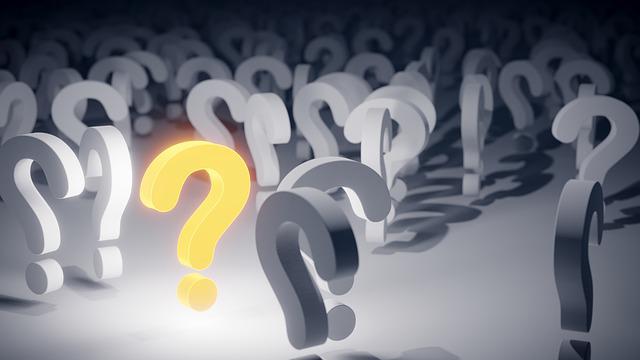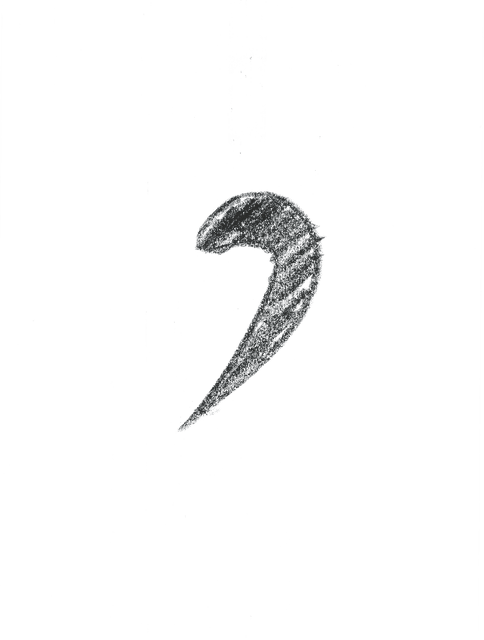academic
Courses tagged with "academic"
Good Communication
Good communication is important for all relationships. We will outlines best ways to improve your communication skills. It involves the distribution of messages clearly and concisely, in a way that connects with the audience. Good communication is about understanding instructions, acquiring new skills, making requests, asking questions and relaying information with ease.
Introduction
You will find a large part of entrepreneurial success relies on the ability to communicate at different levels. You might have excellent business experience and a wonderful idea but if you don’t communicate effectively then you could be harming your business.
The entrepreneur needs to understand how to communicate and use the most effective communication methods for their audience.
You will learn
• Personal communication
• Importance of good communication
• Types of communication
• Effective communication
Speed Reader
This course is to help you determine your current reading speed and to introduce a speed reading tool, Spreeder, a free online Speed eReader designed to improve your reading speed.
Introduction
Spreeder is a free online Speed eReader tool designed to improve your reading speed and thus improve your comprehension, to be able to improve your reading speed, remove bad habits and improve your comprehension.
You will learn
- Your current reading speed and comprehension level
- How to use Spreeder
- How to create a Spreeder bookmarklet
- What's your optimum Spreed limit?
- How to Spreed on the go
- Compare your reading proficiency
Harvard Referencing
In this course, provides a beginner's guide to referencing.
Introduction
If you haven't referenced before or maybe it's been a while, this course on referencing will include something for everyone; no matter the level. It provides a beginner's guide to referencing, as well as in-depth examples of using the Harvard referencing style for a variety of information sources. The lesson also includes tips and recommendations to help you do it the easy way.
You will learn
- Explain the purpose of referencing in academic work
- Apply the Harvard referencing style to a variety of contexts
- Utilise tools and techniques to improve your accuracy with referencing
Equality and Diversity
Learn about equality and diversity in health and care. This course is ideal for intermediate learners.
Introduction
The health and social care sector recognises the need to treat everyone equally, and therefore equality, diversity and rights affect all those working in the sector as well as those who use health and social care services.It is important that these terms, equality, diversity and rights, are at the very core of everything that is done.
Equality, diversity and rights ensure that everyone is treated the same, regardless of the following:· Gender
· Sexuality
· Ethnicity
· Language
· Race
· Age
· Sexual orientation
· Background
· Beliefs
· Disability
· Education
· Skin colour
Equality, diversity and rights will have different effects on your career and an impact on the people you care for as they mean different things. For example:
Equality
Equality looks at how everyone should be treated in the same way. This means that every individual should have the same rights, status or opportunities.
Laws
Laws have been put in place to ensure that this happens and organisations have to write and adhere to equality policies (guidelines that tell an organisation what to do in a particular situation) which outlines what they must do and how they should do this, so that everyone is treated equally.
You will learn
- Introduction to Equality, Diversity and Rights in Health & Social Care
- Groups, Stereotyping and Labelling
- Promoting Equality & Diversity rights in a Health & Social care setting
- Protected Characteristics
- Equality - Rights in the Social Care setting
Word Classes
Learn about word classes, identifying them and what they are. This course is ideal for intermediate learners.
Introduction
Identifying word classesWhen we identify what class a word belongs to, we may think about the following:
· The meaning of the word (for example, is it a ‘thing’ or a ‘doing’ word?)
· The form or ‘shape’ of the word (for example, does it have ‘ed’ or ‘tion’ at the end?)
· The position or ‘environment’ of the word in a sentence (the context).
Verbs are ‘action’ or ‘doing’ words. Verbs can take place in the following tenses, the verb used is the word ‘jump’.
· Past tense, for example “we jumped on the wall.”
· Present tense for example, “we jump on the wall.”
· Future tense for example, “we will jump on the wall.”
Nouns are naming words for people, places, things and ideas.
Nouns can be subdivided into different types:
1. Concrete nouns are objects we can smell, taste, touch and see such as chair, table and dog.
2. Abstract nouns are ideas, states and feelings such as, love, honour and hope.
3. Common nouns name types of people, places, things and ideas such as, winter, biscuit and city.
4. Proper nouns name specific people, places, things and ideas such as William Shakespeare, Cardiff and Batman.
Pronouns are words that replace nouns (the name of a person or an object) when it is already clear whom or what you are talking about.
For example:
Jane has broken her leg. She’ll not be able to play football today.
In the second sentence, she means Jane.
You will learn
- Word classes
- Identifying word classes
- Verbs
- Nouns and pronouns
- Adjectives
- Adverbs
- Prepositions
- Conjunctions
Verbs
Learn about verbs and how theyare used.This course is ideal for intermediate learners.
Introduction
Verbs are ‘action’ or ‘doing’ words.Verbs are words that describe an action or talk about something that happens. They take many different forms depending on their subjects, the time they refer to and other ideas we want to express.Here are some examples of verbs in sentences:
· She runs to catch the train. (The verb is ‘runs’)
· David sings in the choir. (The verb is ‘sings’)
· We walked five miles to a garage. (The verb is ‘walked’)
· I cooked a meal for the family. (The verb is ‘cooked’)
You will learn
- Verbs
- Tenses
- Verb endings
- Common irregular verbs
Understanding Essay Titles
Learn about understanding essay titles and how to do so. This course is ideal for intermediate learners.
Introduction
Essay titles contain clues which show you what the examiner or marker is looking for. In this session we will be learning what those clues are and how to look out for them.These clues include:
· Topic or content words which are words or phrases that tell you the main subject of the essay
· Limiting or focus words which are words that tell you which aspects of the subject you should write about
· Direction words which are words that tell you what you need to do
You will learn
- Understanding essay titles
- Analysing essay titles
- Picking apart the title
- Focusing on the title
- Making notes
- Using the title
- Key words in titles
Types of Speech
Learn about the types of speech and their purpose. This course is ideal for intermediate learners.
Introduction
Your purpose might be:
· To inform or describe
· To instruct or explain
· To persuade or inspire
· To entertain or amuse
When you are planning and preparing for your speech you may wish to come up with a one sentence statement about what you want to accomplish.Your one sentence statement should be:
· Worded from the audience’s point of view
· Precise
· Attainable
For example, you might want to complete the following sentence:
“After my speech the audience will …”
You will learn
- Purpose
- Specifying your purpose
- Speaking to inform or describe
- Speaking to instruct or explain
- Speaking to persuade or inspire
- Speaking to entertain or amuse
Types Of Sentences
Learn about types of sentences that can be used. This course is ideal for intermediate learners.
Introduction
A sentence is a grammatical unit made up of one or more words. Sentences begin with a capital letter and end with a full stop, a question mark or an exclamation point.In this course we will be learning about the three main types of sentence:
· Simple
· Compound
· Complex
A simple sentence has one idea. It has a subject and only one verb.
For example:
The girl sprinted after the tiger (the verb is sprinted).
The cat purred (the verb is purred).
A simple sentence is one subject and one verb.
A complex sentence is formed when you join a main clause and a subordinate clause with a connective.
A subordinate clause is one that relies on a main clause to make sense.
The connectives in complex sentences tell us about the order or the place in which things happened or specify a cause or effect relationship between events (e.g. after, although, as, because, if, since, unless, when).
For example:
I love roast potatoes, although my mum prefers them boiled. (The connective is the word ‘although’.)
You need to prepare for the English test tomorrow if you want to get full marks. (The connective is the word ‘if’.)
You will learn
- Types of sentence
- Simple sentences
- Compound sentences
- Complex sentences
Question and Exclamation Marks
Learn about question marks and exclamation marks and when they are used. This course is ideal for intermediate learners.
Introduction
Question marks and exclamation marks can be used instead of a full stop at the end of a sentence.Every sentence must end with one of the following:
· A full stop
· A question mark
· An exclamation mark
The question mark is used to indicate a question or query.
It should be used at the end of the following:
· Direct questions, for example: How much is that? (There is a question mark at the end)
· Tag questions, for example: You’re lost, aren’t you? (There is a question mark at the end)
You will learn
- Ending sentences
- Question marks
- Exclamation marks
Punctuation
Learn about punctuation and all the different punctuation marks. This course is ideal for intermediate learners.
Introduction
Capital letters are used for a number of different purposes which are the following:· At the beginning of a sentence. For example: The dog barked loudly (the capital letter is at the beginning of the word ‘the’).
· For the personal pronoun ‘I’. For example: Yesterday, I went the zoo (the capital letter has been used the for the word ‘I’).
· For proper nouns (specific names of people, places and things). For example: Rashid went to Paris in April (the words Rashid, Paris and April all have capital letters at the beginning).
Full stops are used in the following ways:
· To mark the end of a sentence. The full stop marks the end of the sentence, unless a question mark or exclamation mark is being used instead.
· To indicate an abbreviation. For example: 6 a.m. (The full stop is used between the ‘a’ and ‘m’ and after the ‘m’.
· For ellipsis (three dots at the end). For example:
o As Shakespeare said, “If music be the food of love …” (The ellipsis is at the end).
o “You know how I feel about that…” (The ellipsis is at the end).
You will learn
- Capital letters
- Full stops
- Commas
- Apostrophes
- Question marks
- Exclamation marks
- Colons
- Semi-colons
- Quotation marks
- Hyphens
- Dashes
- Parentheses
- Brackets
Nouns and Pronouns
Learn about nouns and pronouns and the different types. This course is ideal for intermediate learners.
Introduction
Nouns are naming words for people, places, things and ideas.They are divided into two subsections:
1. Concrete nouns are objects we can smell, taste, touch and see such as chair, table, dog and pen.
2. Abstract nouns are ideas, states and feelings such as love, hope, honour and clarity.
Nouns can also be sub-divided into proper and common nouns.
A proper noun has two distinctive features that make it different to a common noun:
1. It will name a specific item.
2. It will begin with a capital letter no matter where it occurs in the sentence.
Pronouns are words that replace the name of a person or an object when it is already clear whom or what you are talking about.Example: “Jane has broken her leg. She’ll not be able to play football for weeks.”
You will learn
- Nouns
- Concrete nouns
- Abstract nouns
- Proper nouns
- Common nouns
- Pronouns
Monologues
Learn about monologues, the different types and writing a monologue. This course is ideal for intermediate learners.
Introdcution
There are two main types of monologue:1. Interior
2. Dramatic
An interior monologue involves a character externalizing their thoughts so that the audience can witness experiences that would otherwise be mostly internal.
A dramatic monologue involves one character speaking to another character.
Let’s look at the meaning of the words to figure out what a dramatic monologue is?
· Dramatic
· Mono
· Logue
1. Dramatic means striking and, or effective
2. Mono – from the Greek word monos – means alone or one.
3. Logue – from the Greek word logos - indicates speech of a particular kind (as in travelogue or dialogue).
You will learn
- Types of monologue
- Dramatic monologues
- Key features of a dramatic monologue
- Key features of an interior monologue
- Writing a monologue
Essay Structure
Learn about essay structure how to use it. This course is ideal for intermediate learners.
Introduction
All essays should have three parts:
- Introduction
- Main body
- Conclusion
A good essays introduction should:
● Tell the reader how you are going to answer the question
● Define or explain any specialist terms in the essay title
● Set the scene for the rest of the essay
● Give a brief outline of the key issues or points you are going to cover in the essay, in the order you are going to cover them
● Grab the reader’s interest so they want to read more
You will learn
- Essay structure
- Introductions
- Main body
- Paragraph structure
- Conclusions
Hyphens and Dashes
Learn about hyphens and dashes and how and when they can be used. This course is ideal for intermediate learners.
Introduction
Hyphens are used for the following:· To link compound words and numbers. For example: Well-being (the hyphen is after the word ‘well’) and fifty-one (the hyphen is after the word ‘fifty’).
· To clarify words that use prefixes. For example: Re-covering (the hyphen is after the ‘re’) and self-taught (the hyphen is after the word ‘self’).
· To write fractions. For example: Two-fifths (the hyphen is after the word ‘two) and one-half (the hyphen is after the word ‘one’)
Dashes are used in the following ways:
· To add comments as part of informal writing. For example: “I might get an ‘A’ grade – you never know.” (The dash is after the word ‘grade’). Note that brackets should be used instead of dashes in formal writing.
· Indicate a range. For example:
o It will take 3-6 days to complete. (The dash is between the 3 and 6).
o To gain a merit you need a mark of 60-70%. (The dash is between the 60 and 70).
You will learn
- Using hyphens to link compound words and numbers
- Using hyphens to clarify words that use prefixes
- Using hyphens to write fractions
- Using dashes to add comments as part of informal writing
- Using dashes to indicate range
Conjunctions
Learn about conjunctions and the different types. This course is ideal for intermediate learners.
Introduction
Conjunctions connect and relate ideas in:· Words
· Phrases
· Sentences
They assist in the logical flow of ideas as they signal the relationship between these ideas.
Coordinating conjunctions
The most commonly used conjunctions are:
· And
· But
· Or
These are called coordinating conjunctions.
Co-ordinating conjunctions join two ideas of equal value in a sentence.
It does not matter which way round the ideas are presented.
You could say “it is cold and wet today” or “it is wet and cold today”.
It does not affect the meaning of the sentence.
You will learn
- What a conjunction is
- Coordinating conjunctions
- Subordinating conjunctions
- Conjunction positions
Commas
Learn about commas and why and when they can be used. This course is ideal for intermediate learners.
Introduction
The comma is used to indicate a slight pause in a sentence.It is also used to separate a sentence into blocks of thought or logical groupings.
For example:
They will never go there, whatever they say. (The comma is after the word ‘there’.)
My favourite foods are chocolate, cheese and cake. (The comma is after the word ‘chocolate’.)
Using commas!
Read this piece of writing which has no punctuation.
on our picnic we ate cheese sandwiches fruit salad and chocolate cake
Depending on the punctuation we add in to make it into a sentence, we can have:
· 3 items: cheese sandwiches, fruit salad and chocolate cake. (The comma is after the phrase ‘cheese sandwiches’.)
· 4 items: cheese, sandwiches, fruit salad and chocolate cake. (The commas are after the words cheese and sandwiches.)
· 5 items: cheese, sandwiches, fruit, salad and chocolate cake. (The commas are after the words cheese, sandwiches and fruit.)
· 6 items: cheese, sandwiches, fruit, salad, chocolate and cake. (The commas are after the words cheese, sandwiches, fruit and salad.)
The simple comma makes all the difference to making sense of the meal that has been eaten.
You will learn
- Commas
- Why you use commas
- Using commas to seperate items in a list
- Using commas to mark less important parts of a sentence
- Checking for use of commas
Writing for an argument
Learn about some common reasons for writing an argument including for and against. This course is ideal for intermediate learners.
Introduction
Writing an argument is a formal way of making a case for and/or against a certain thing or topic, and there are many reasons why someone might do this.In college you might be asked to write an essay where you argue for and against a certain idea,
for example:
''Mobile phones should be banned from classrooms. Discuss.''
However, outside of college, there are lots of reasons for this style of writing as well. You might want to voice your opinions about things happening in your area, for example plans being made by the council, or new political schemes that are being introduced.
You will learn
- Some common reasons for writing an argument
- How to write in favour of something
- How to write against something
- How to piece together a fair argument
Verbs and adverbs
Learn about verbs and adverbs, what they are, how to use a verb in a sentence and how to use an adverb with a verb. This course is ideal for intermediate learners.
Introduction
In this course we are going to think about what verbs and adverbs are, and the different ways that we might use these words in everyday sentences.In English there are different types of words that we use to make up our sentences – verbs and adverbs are two of these word types.
There are another two word types that you will be able to find in most sentences and these are nouns and adjectives (we look at these in more detail in another session).
Each word type performs a specific job or role in any given sentence.
Every sentence in the English language has to have a verb in it – without a verb, it is not a proper or complete sentence, which just goes to show how important these words really are.
The reason they are so important is because they explain the action of a sentence. From the verb we know exactly what any given person is doing – whether it is a physical action or whether they are simply thinking about something.
You will learn
By the end of this session, you will:· Know what a verb is
· Understand how to use a verb in a sentence
· Know what an adverb is, and
· Understand how to use an adverb with a verb
Spelling – vowels and consonants
Learn about spelling, specifically vowels and consonants, what they are, how long and short vowels work and the difference between a hard and soft consonant. This course is ideal for intermediate learners.
Introduction
Vowels and consonants are the names that can be given to the letters in the English alphabet. In the whole alphabet there are actually only five vowels and they are:
A – E – I – O – U
This means that everything that is not a vowel – i.e. it is not one of those letters listed above – is a consonant.
Knowing how vowels and consonants work together is an important part of spelling, as both types of letter can be used to make different sounds and words, and they can change the meaning of a word entirely as well.
You will learn
By the end of this session, you will:· Know what a vowel is
· Know what a consonant is
· Understand how long and short vowels work
· Know the difference between hard and soft consonants


